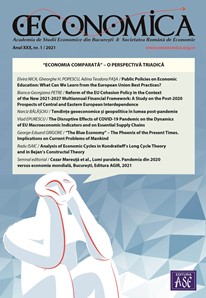
Music Industry Development – Future Global Trends on the Rise
The music industry has developed at high speed in the last 30 years and it has changed the way music is listened to, purchased and even produced. Global Internet connections made possible the distribution of music in an instant and immaterial form. Daily, millions of people use different tools like Facebook Social Media, Google+, Twitter, Youtube etc., to interact with the music industry and its dedicated platforms like Soundcloud, Mixcloud, Spotify, Digitally Imported, etc.
Everything is at your fingertip, and Cloud Computing is the next generation of storage and playback for music, video and image content. Sharing and distribution allows Internet users to instantly access Big Data sources from all over the planet, home, office or mobile telecommunication devices (smart phones, tablets, smart watch).
From art to industry
Over a period of more than 50 years, the music industry has operated with simple models and a monopolistic tint. The rules were well established and only those who invested serious resources and a long time to study and composition could cross paths with music industry success.
Over a period of more than 50 years, the music industry has operated with simple models and a monopolistic tint.
By the end of 2007 – 2008, the music industry was relying on the dependence of artists to record labels and vice versa: a record label could not operate without the “product supplier”, who is the artist. In this mutual business, each of the two main players (the artist and industry) had as goals the increase of the quality of music, image and profits.
For the artists, investment consisted in musical instruments (guitar, drums, piano, bass, violin, etc.), electronic equipment (synthesizers, mixers, effects, advanced computers, etc.), and costs for studio location (rent, electricity, etc.) and, of course, these had to be consistently available and sustainable with regards to living costs.
On the other hand, the record companies’ investments were at a much higher level: investment in the best equipment offered by the market for the studio locations, departments of artist administration, marketing, logistics and sales, etc. Additional substantial payments were made to producers of audio mediums (factories, printing and vinyl, cassette, CD etc.).
The life span of each product launched on the market (in this case an album or single) was dependent on the capability and strength of the record company investment in production capacity, delivery and promotion of product or services.
The strict selection of the quality of musicians enabled a forecast of success that the traditionally-monopolistic music industry made possible. The advantages came in financial terms, by producing some of the best profits of any world industry. The disadvantages were largely of legal nature and the duties the artists as a result of the contracts signed with the record companies, which were reflected in the financial remuneration and taxes.
The costs supported by a music producer were largely composed of the total costs of providing operability, reliability and sustainability of a studio for recording semiprofessional musical content. Additional costs were directed to professional studios that offered the opportunity to re-record a song or album in high quality and submitting it to a record company as a label demo version of the product for evaluation and possible collaboration (contracting).
The strict selection of the quality of musicians enabled a forecast of success that the traditionally-monopolistic music industry made possible.
The contracts with the record companies brought increased visibility and image to an artist and the entire power of the major labels was used for promotion and distribution of as much audio content as possible on the market. The income that came from a contract with a record label was just an average part of the equation. Concerts and good management in maintaining the fan groups brought additional real value to artists and, consequently, the record company.
Any artist sought to sign a contract with the major players in the traditional music industry (known as major labels), such as: Universal, Warner Group, Sony, Capitol or EMI. These had the wherewithal to invest considerable financial resources, commissioning the procurement of professional marketing teams, special budgets for radio and TV promotions, events and concerts, thereby enhancing potential profits.
The strict legal aspects became a burden for the artist, forcing them to exclusivity and foregoing a considerable percentage of the profits in return for services provided by major labels. Among the great artists of such Major Labels were The Beatles (Capitol), Michael Jackson (Epic), Madonna (Warner), Ray Charles (Capitol), Rolling Stones (EMI) and many others.
By 2008, the market for music products was still in material form, having its activities in the selling of cassettes, LPs and CDs. The only major source of income was actually from concerts and music events. There was never a system to measure the exact number of plays of songs on radio or in clubs. Revenues were low to medium and were calculated inaccurately[1].
This article synthesizes the critical evidence for a big change in the history of the music industry, brought on by the evolution of technology and the appearance of the internet.
The main players of this market continued to adapt their businesses, generating new and competent perspectives in their activities. The era of virtualization is here and is at the finger tip of any mobile smart device user.
Significant changes started to be felt across the international areas of music, from legal issues to bankruptcies of entire supply chains and huge losses for many labels.
Statistics show that, since the appearance of new generations of technology, the music industry has evolved from the analog and simple devices with limited storage capacity to revolutionary digital mobile devices with superior quality of reproducing the audio content. Years of research and financial resources went into the forward push of this industry, which generated a significant change in the way people consume music.
Main moments in the evolution of the music industry: Transition from analog to digital audio
Throughout the middle of the 20th century, computers were undergoing an enormous transition. Technology was slowly moving from a well-established analog method towards a digital approach. Actual commercialization of these digital types of computers did not occur until the late 1950s. The initial focus of these systems did not incorporate sound or music.
Early digital music pioneers were developing programs that essentially turned a computer into a musical instrument. In doing this, they could compose simple melodies or even full symphonic pieces. The software allowed the users quicker production times and ease of use.
Finally, the development of digital recording technology changed the format of recorded sound. The ability to easily manipulate the digital audio signal significantly increased the efficiency of audio recording and was able to extend the technology beyond simple music[2].
An important change occurred in the 1990s, when the transition from storage systems for analog audio (vinyl, cassette audio tape) to digital (CD, DVD, Blue-Ray, Flash drive devices) took place. Significant changes started to be felt across the international areas of music, from legal issues to bankruptcies of entire supply chains and huge losses for many labels.
The need to implement the intelligent trends of using easy communication and self-explanatory handling for the user was one of the key priorities of system architects and engineers.
In 1995, the market was not ready for such a wave of change, but obviously had to reposition and urgently adapt to this permanent change for the future. Apple took the first steps in this direction, when the online platform iTunes was first introduced, becoming the world’s largest platform for the sale of digital audio content. The advantages of the unpatented MP3 algorithm led also to the innovation of portable audio playback devices, the so-called MP3 Players.
The need to implement the intelligent trends of using easy communication and self-explanatory handling for the user was one of the key priorities of system architects and engineers. Using existing communication techniques such as visual communication, Soundcloud’s interface was introduced to the public, providing a simple, effective and perfectly adapted interface for the user, with free communication modules, evaluation and direct user interaction[3].
From the perspective of users, one should mention a few innovations from the sharing and streaming platforms:
- The visual representation of sound – the visual representation of sound (waveform) is indicated by a border fringe. These "fringe", in technical language "peaks", represent sound intensity within the digital audio content;
- Visual communication of sound – anyone who wants to make a comment at some time while playing digital audio content, can enter messages using a dedicated textbox;
- Instant Connect (Instant Connection) – people who access the song can listen to the song instantly, without loading time, due to global cloud computing technology;
- Connecting musicians around the globe by pressing FOLLOW: International cooperation;
- Remixes of great songs of known artists are available to those who want to produce a different version of the original[4];
- Public/private mode: the option to have controlled access over the visible online addresses of songs. Public mode, being accessible to all, private mode being accessible only to the account administrator;
- Real Feedback from audience, which is valuable also in terms of professional musicians who have the opportunity of giving advices to those who begin to take part in the music industry;
- The possibility of creating new models for business.
The recent development of the Internet has not only led to enlarged social networks but also to the success of the online distribution via digital music platforms. Soundcloud gave the opportunity to cooperate with these platforms and to effectively assist sales of audio content for those who are interested in music that cannot be found in classical forms such as CD, vinyl or cassettes[5].
People who buy music online using online payments can benefit from a product at the highest audio quality at a very convenient price that varies between EUR 0.99 and EUR 3 per downloaded audio content. This possibility became very convenient for business users and the industry has changed radically.
For speed and ease of use, Soundcloud introduced the implementation of audio visual content into social platforms like Facebook or Twitter, blogging and web page structures[6].
Trends and future perspectives in the music industry
5G technology will change the way mobile devices are used globally (the fifth generation of mobile networks or wireless systems). This term is not yet officially used by large companies in telecommunications (Telekom, Orange, Vodafone, Verizon, Sprint, etc.) or standardization institutions as 3GPP, WiMAX Forum and ITU-R.
Digitization will not destroy or disrupt the business world of the music industry but will balance new income sources.
The fifth generation of communication systems is expected to be a real wireless network capable of supporting applications specifically developed for Wireless World Wide Web (WWWW. This will be a smart technology, capable of interconnecting all systems globally, without limits[7].
Implementation of standards in the 5G technology could last until 2020. In terms of transmission of information, it is expected that 5G standards exceed all expectations 4G networks have had to offer until today, 1Gbps reportedly being the threshold agreed upon by ITU-R (International Telecommunication Union, the United Nations agency specialized in Information Technology and Telecommunications)[8].
The Norwegians will stop analog FM radio transmissions from 2017; FM radio frequencies being the ones someone listens to in the car, at work, home etc. Digital broadcasting will rely on digital radio, DAB (Digital Audio Broadcast), where a bandwidth similar to FM radio stations can fit more in higher quality.
Norway will use DAB (Digital Audio Broadcasting Plus) format using AAC + codec (based on MPEG-4) for sound. There are considerable advantages for listeners:
- A DAB tuner receives digital radio stations simultaneously all and offers the ability to quickly choose what we want to be heard;
- The quality of music is similar to that of a CD and varies how much the transmission is compressed;
- The received signal is 100% or not at all. The Digital Audio Broadcasting systems do not have background noises and do not lose the signal as someone moves away from the transmitter in the area;
- It does not interfere with other stations.
The shift to a digital radio transmission Digital Audio Broadcasting (DAB) was proposed by the Norwegian government in 2011. According to official data, transmission costs of FM radio channels are eight times higher than the costs of DAB transmission, according to survey results from market studies, driven and provided by the Norwegian Government[9].
Regarding Romania, the National Radio communications Company SNR (Radiocom) is currently running national public radio programs of the Romanian Radio Society (Romania News, Romania Music, Radio Bucharest and radio3net) in FM frequency but already has pilot projects regarding the implementation of digital broadcasting system T-DAB (Terrestrial Digital Audio Broadcasting) radio programs in Bucharest since 2015[10].
Conclusions
The business world is constantly changing and new trends in innovation redefine the business plans of big players and artists. Some examples of innovation are inventions like CD, MP3 player devices, Internet-services and streaming. In the last 5 to 10 years, they have created new models and start-ups that have changed the traditional business mentalities of record companies. Some of the pioneer companies in this new digital age were Pandora, Soundcloud, Spotify and LastFM. This industry has had to reinvent itself[11].
The “market power" concept will lose its importance when digitization increasingly gives more direct power to Internet users and artists. They interact directly with each other and can bring added value and be more attractive for a modern record company. These online trends are more attractive than the Warner, Universal and Sony Music classical business models.
Digitization will not destroy or disrupt the business world of the music industry but will balance new income sources.
Many artists and labels are very concerned about losing their conventional sources of revenues and receipts of royalties, because there can be no revenue when their music is distributed online by anyone, anytime and is not officially bought.
The important effect on the music industry registers as traditional-classic innovation, which does not destroy the music itself, but redefines the industry as we have known it for over 50 years. This is why a young company like Soundcloud, launched just five years ago, has come to be valued at 700 million dollars.
Soundcloud and Mixcloud are companies that are successful because they changed the rules in the music industry and found a way to sell the audio digital content. This market still offers many opportunities for new creations and innovations, such as online booking platforms for artists or concerts sponsored directly by the audience[12].
At the moment, there are already companies that have changed their marketing strategies, from the communication type of one-to-many (1:N) to a communication type many-to-many (M:N). The most popular platforms are Wikipedia, Facebook and Twitter. In the future, increasingly more people will become creators of content and the communication will be bilateral, supplying producers with real feedback.
Artists who will embrace these new trends and will be receptive to reactions from the audience will have great success in this emerging economy. Co-production policies will become the standard in the music industry.
This article reflect aspects of the particular periods of the music industry’s evolution in the last forty years. The internet and 5G essentially revolutionized the life cycles of musical products so that, around the world, businesses had to reorganize themselves and their plans for producing and selling the music products. Technology helped the record companies and musicians to create and distribute music and it offers a wide variety of exciting career options.
[1] Paul Niculescu-Mizil Gheorghe, (2015) “Digital online Streaming platform – Soundcloud: A case study”, Workpaper for UPB Bucharest 2014. Info available from: http://soundcloud.com, https://en.wikipedia.org/wiki/SoundCloud
[2] Paul Niculescu-Mizil Gheorghe, (2015) “Digital online Streaming platform – Soundcloud: A case study”, Workpaper for UPB Bucharest 2014. Info available from: http://soundcloud.com, https://en.wikipedia.org/wiki/SoundCloud
[3] Paul Niculescu-Mizil Gheorghe, (2015) “Digital online Streaming platform – Soundcloud: A case study”, Workpaper for UPB Bucharest 2014. Info available from: http://soundcloud.com, https://en.wikipedia.org/wiki/SoundCloud
[4] Mohamad Maroof Diddiqui, (MISECE) Department of Electronics and Communication Engineering, Integral University, Lucknow, India, (2011), „High Performance Architecture and grid Computing – Communications in Computer and Information Science | Vision of 5G Communication”, Vol. 169, 2011, p. 252-256, Springer Link
Available from: http://link.springer.com/chapter/10.1007/978-3-642-22577-2_34
[5] Radu Dumitru, NWRADU: IT expertise blog and discussion forum, Technology section, (2015), „Norvegia renunță la radio FM și trece la digital”
Available from: http://www.nwradu.ro/2015/04/norvegia-va-renunta-la-radio-fm-si-trece-la-digital/
[6] Paul Niculescu-Mizil Gheorghe, Societatea Națională de Radiocomunicații S.A., Sectiunea Broadcasting, (2015), „Broadcasting Radio analogic – Broadcasting Radio digital T-DAB)” Available from: http://www.radiocom.ro/business/servicii/Broadcasting/Broadcasting-Radio/
[7] Alexandra Suich, The Economist, (2013), „Here comes the sun – better times for the music industry” Available from: http://infostory.com/2013/12/29/the-future-of-the-music-industry-in-numbers-digital-tipping-point-in-2014/
[8] Paul Niculescu-Mizil Gheorghe, Cezar Scarlat, (2015) “Music Industry | Trends in the 3rd decade”, Work paper for ICMIE 2015, International Conference on Measurement Instrumentation and Electronics, UPB Bucharest.
[9] Donald S. Passman, (2015) “All You Need to Know About the Music Business: Ninth Edition” Simon & Schuster Publishing House, p. 43-62.
[10] Tim Whitsett, (2001) “Music Publishing: The Real Road to Music Business Success 5th edition”, Artistpro Publishing House, p. 35-51.
[11] David Miles Huber, Robert E. Runstein, (2013) “Modern Recording Techniques: 8th Edition”, Focal Press Publishing House, p. 288- 320.
[12] David J. Moser, Cheryl L. Slay, (2011) “Music Copyright Law”, Cengage Learning Publishing House, p. 110-152.








